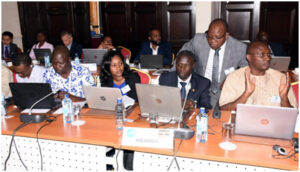The Institute has an exciting array of once-off and regular publications on key development policies, with emphasis on Sub-Saharan Africa. They include Books, African dialogue, research papers, working papers, occasional papers and economic reviews. The Institute’s publications communicate the analysis, views, and scholarship of their authors and are not intended to reflect an official view of the Institute or the views of members of the Institute’s Board of Trustees.
| Title | |
|---|---|
|
Domestic Revenue Mobilization and Reform of the Tax System in Burundi This book explores the link between tax reforms and revenue mobilization, and the options available for policy-makers on revenue mobilization in Burundi. It sets the current system in the context of reforms that have taken place over the last 30 years or so.
|
Download |
|
Domestic Revenue Mobilization and Reform of the Tax System in Namibia This bookexplores the link between tax reforms and revenue mobilization, and the options available for policy-makers on revenue mobilization in Namibia.It sets the current system in the context of reforms that have taken place over the last 30 years.
|
Download |
|
Taking stock of the tax reforms in Uganda, 1950–2018: Why tax exemptions should be avoided This book traces the tax policy and administrative measures that Uganda government has since introduced and implemented over the past six decades, and explains how the country fared under these reform episodes
|
Download |
|
The rise and fall of budget support in Africa This book provides a critical appraisal of budget support in Uganda since 1998- 2018, highlighting the socio political economy factors for the rise and fall of budget support. It explains why in the past years, support for GBS has diminished significantly among major bilateral donors. While some bilateral donorsreduced their GBS operations, others (formerly dedicated
|
Download |
|
Putting money in a basket with holes: a radical rethinking of the way to finance poverty reduction in Uganda This book explores ways in which donor agencies can avoid the pitfalls of basket funding to impact the lives of the poor in Uganda.
|
Download |
|
Public Expenditure Management Effectiveness in Uganda’s Education System This paper describes how the public education expenditure management system works in Uganda. It specifically identifies the formal roles of institutions; the structure and flow of information generated by the public expenditure management system and applies them to the Education Sector in Uganda. It shows the procedures for each stage in the expenditure and budget
|
Download |
[product_table id=”836″]






